Policies Changing New York: Impact Magazine 2018-19
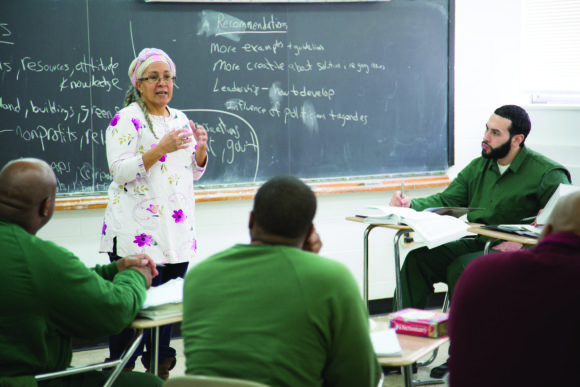
As a New York institution and part of the City University of New York, John Jay College is home to many who want to drive real-world reform to make New York communities stronger. Our unique research centers provide evidence-based partnerships and guidance that city officials and state legislators need to create better policy. Read on for a quick look at the impactful work they are doing in New York, or read the full story in our latest issue of Impact research magazine.
Easing Reentry
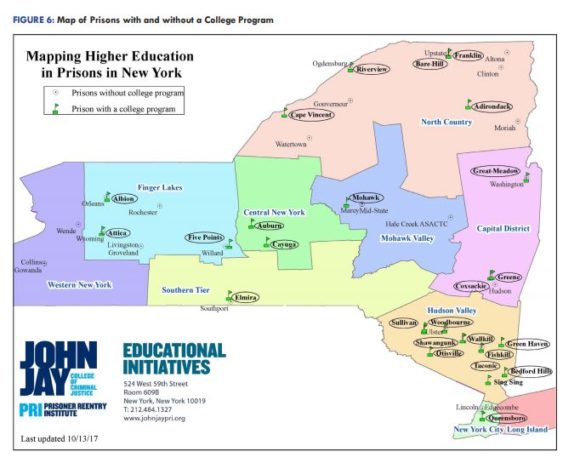
The Prisoner Reentry Institute has been a research center since 2005, when it was founded to help people live successfully in their communities after contact with the criminal justice system. The center, directed by Ann Jacobs, engages in a combination of public advocacy, direct service, and collaborative partnerships to promote a range of reentry practices, with a focus on creating pathways from justice involvement to education and career advancement.
In pursuit of that goal, PRI advocates for higher education in prisons, priming what they call the “prison-to-college pipeline.” They recently produced a report mapping higher education opportunities in New York State prisons, finding that only 3% of more than 45,000 people in New York prisons were participating in higher education programs, despite expanded funding.
PRI is also interested in post-incarceration advocacy. A work group, led by PRI’s Director of Public Policy Alison Wilkey and comprised of local stakeholders, is working to change the New York City Housing Authority’s policies excluding residents who have been arrested. The work group’s actions, including the creation of a clearer exemption application, new guidelines limiting the use of exclusions, and tenant education, have helped reduce the number of people excluded from NYCHA housing 50% from 2016 to 2018.
Interrupting Crime
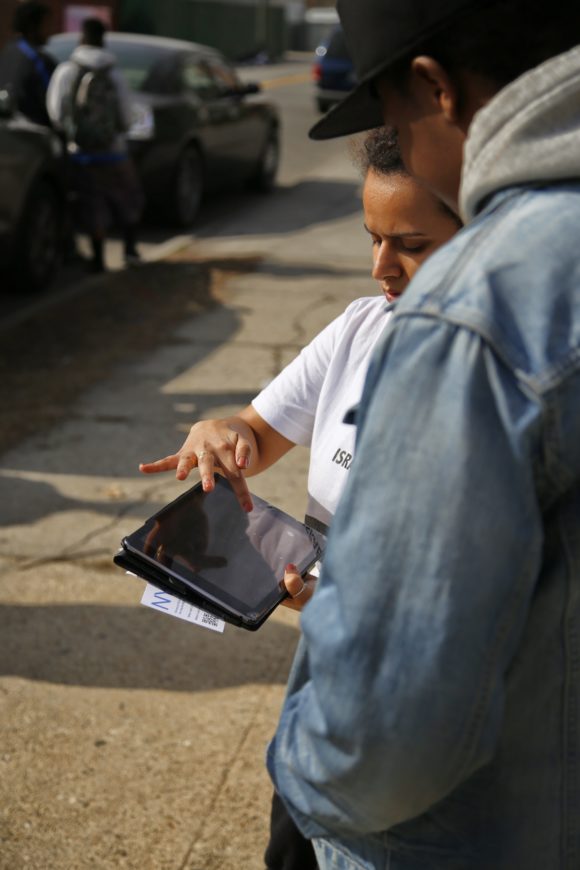
A team of Research and Evaluation Center researchers is evaluating Cure Violence, a public health approach to violence reduction.The program relies on neighborhood-based workers, often with a history of justice involvement, mediating and working with younger people in the neighborhood to keep them from going down a violent path.
“Politically, it’s a difficult program to operate,” says REC Director Jeff Butts, because city officials are often wary of Cure Violence workers’ criminal histories. But REC has found that Cure Violence sites in the South Bronx and Brooklyn have seen greater violence reductions than comparison sites. According to Butts, explaining the research and the results clearly to the public is key to shifting policy. “You can’t change policy, no matter how smart you are, just by publishing articles in academic journals.”
Less Punishment, Less Crime
Violence isn’t the only type of crime that can be reduced with less punitive solutions. Director of research project From Punishment to Public Health (P2PH) Jeff Coots holds that alternatives to incarceration can not only reduce the use of prison and jail terms, but also offer rehabilitative services to people in need. “Punishment alone is not getting us the public safety outcomes we want,” he says. “How do we identify public health-style solutions that can respond where punishment does not, and isolation will not?”
Among P2PH’s signature initiatives is a pilot project to use pre-arrest diversion for minor offenses committed by the homeless. Many of those cases were previously decided at arraignment, denying arrestees the chance to connect with needed services. The pilot has reduced the number of people arrested and increased the number connected with services like transitional housing and health treatment.
In general, Coots believes policymakers are increasingly open to health interventions as an alternative to incarceration. “We don’t want the jail to be the biggest mental health provider in our community.”
Justice by the Numbers
The Data Collaborative for Justice is invested in documenting the scale of the criminal justice footprint, in New York and a network of other cities, and

considering solutions to reduce it. DCJ explores high-contact points in the system, including pretrial detention and incarceration in New York City jails. A major project for the center has been to produce an evaluation of the 2016 Criminal Justice Reform Act, passed by the New York City Council to “create more proportional penalties for certain low-level, nonviolent offenses.” With support from the Mayor’s Office of Criminal Justice, DCJ’s evaluation shows that the CJRA seems to be achieving its aims — 90% of summonses for five high-volume offenses like noise violations and littering are now civil rather than criminal, with an associated decline in criminal warrants.
The positive impact of this legislation has the potential to push policy change in other areas by informing conversations with lawmakers. DCJ works closely with city and state agencies to gather data and make it available to policymakers so they have the resources to make evidence-based decisions. “Policy neutrality is an important part of DCJ’s mission and outlook,” says Project Director Kerry Mulligan. “That has allowed us to be a trusted broker with a diverse set of data partners.”
Among John Jay College’s research centers and projects, some researchers are building the evidence base, while others are rolling up their sleeves to help cities implement and evaluate solutions on the ground. In each case, the vital goal is making communities safer. Says REC’s Jeff Butts, “You have to put the evidence in front of [policymakers] on a regular basis in order to get the political culture to start to shift.”
For the full feature, please visit the John Jay Faculty and Staff Research page to read the whole magazine in PDF form!
Bringing Justice Back to the System: Impact Magazine 2018-19
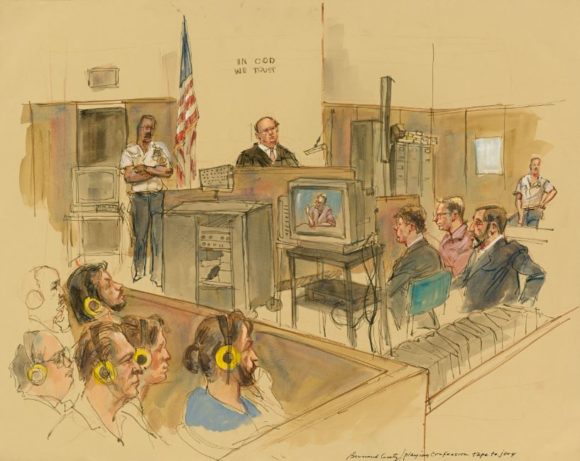
Although it may seem obvious, the basic question of fairness is of huge concern to those interested in reforming our nation’s criminal justice system. This is especially important in the courtroom. “The administration of justice,” says John Jay constitutional law professor Gloria Browne-Marshall, “is supposed to be done as equally under the law as possible.” That’s the concept of due process.
But the system doesn’t always work fairly. “Mass incarceration … is unfortunately disproportionately shouldered by people of color,” said Browne-Marshall. So how do we change things to ensure equitable outcomes?
Behind the scenes, a host of scholars at John Jay College are leading the charge to develop findings, share knowledge, and train officers of the court to promote courtroom practices that are more impartial and lead to real justice. Read on to be introduced to these scholars, or read the full feature article on pages 16-17 of this year’s Impact research magazine.
Taking Better Testimony
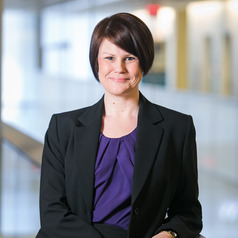
Young or old, witnesses can be unreliable. “The most important finding is that memory is malleable and reconstructive, rather than an exact replica of any given event,” said Deryn Strange, a professor of psychology. Adult memories, especially when recounting traumatic experiences, can change over time and with the introduction of new information. Memories may incorporate intrusive thoughts, or even warp to include what the individual wishes she did differently.
Strange, who not only does research on memory but also educates courtroom officials, believes that whenever someone’s memory is on trial, judges, juries and lawyers all need to understand the power and limitations of human memory. Otherwise, decisions of guilt or innocence may very well be incorrect and unjust.
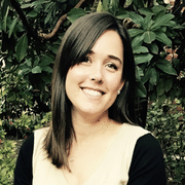 Kelly McWilliams, an assistant professor in psychology, focuses her research on children in the witness box, specifically how they use and understand language, and experience memory. Children’s memories are more limited than adults’, and they are susceptible to the introduction of false memories through questioning. Gaining helpful testimony from young witnesses depends more on the questions asked than on their abilities.
Kelly McWilliams, an assistant professor in psychology, focuses her research on children in the witness box, specifically how they use and understand language, and experience memory. Children’s memories are more limited than adults’, and they are susceptible to the introduction of false memories through questioning. Gaining helpful testimony from young witnesses depends more on the questions asked than on their abilities.
McWilliams’s research builds on recommendations from the National Institute of Child Health and Human Development — like asking open-ended questions, using general prompts, and more. McWilliams tests new modes of questioning to gather details children might not share in response to an open-ended question, which may be necessary for charging decisions or establishing credibility. “These are practices that take into account what kids are capable of doing and what we should and shouldn’t be asking them to do as witnesses,” she says.
Understanding the Science
Courtroom participants — attorneys, judges, and jurors alike — can often use help determining which pieces of scientific evidence are credible. 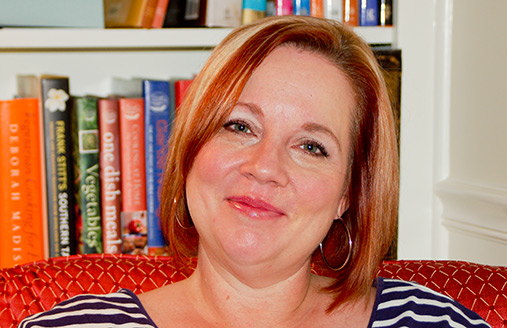 Margaret Bull Kovera, a social psychologist by training, has researched this issue for two decades.
Margaret Bull Kovera, a social psychologist by training, has researched this issue for two decades.
Evidence like repressed memories and bite analysis, and even fingerprint evidence, lack a solid basis in science. However, they often make their way into evidence, accompanied by expert witnesses, and parties to a trial may not know enough to challenge them. As a result, “they make decisions that are really not borne out by the evidence, if one were evaluating it properly,” says Kovera.
Kovera’s research is working toward a set of safeguards that contribute to better decision-making. The most promising method is simply to highlight flaws in the evidence during cross examination — something that attorneys can be trained to do — or opposing experts can help provide context. In the end, procedure that relies on solid science helps result in fairer justice.
Open to Interpretation
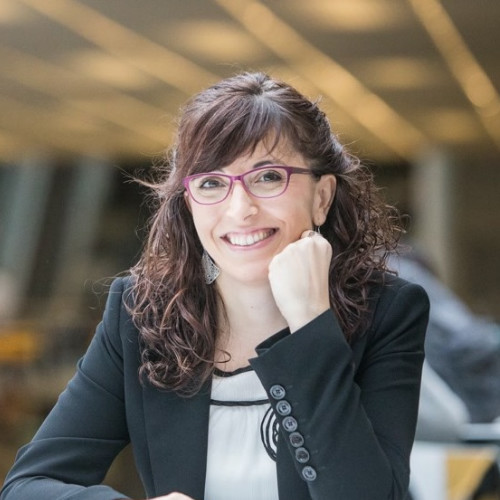 The quest for fairness doesn’t end at conviction. Post-incarceration, language access is an important part of accessing necessary services and treatment in prison. According to Aída Martínez-Gómez, an associate professor of legal translation and interpreting, incarcerated people who don’t speak the official language of the institution where they are being held face a number of roadblocks. It’s harder for incarcerated people to navigate forms, requests, and services without translated materials. But she says there are promising solutions.
The quest for fairness doesn’t end at conviction. Post-incarceration, language access is an important part of accessing necessary services and treatment in prison. According to Aída Martínez-Gómez, an associate professor of legal translation and interpreting, incarcerated people who don’t speak the official language of the institution where they are being held face a number of roadblocks. It’s harder for incarcerated people to navigate forms, requests, and services without translated materials. But she says there are promising solutions.
Martínez-Gómez advocates most strongly for nonprofessional interpreting services — or services provided by incarcerated peers. In one example from her work, the practice “not only contributed to overcoming the language barrier in the prison, but also to specific rehabilitation goals and potential job opportunities” once the individual’s sentence ended.
In the end, creating a fairer system means using empirical evidence to apply justice accurately and equally in the courtroom and beyond, and to avoid administering justice in arbitrary, capricious, or discriminatory ways. Though these studies can’t solve every inequality, small changes in process and better education of the parties involved can move the needle on basic fairness.
For the full feature, please visit the John Jay Faculty and Staff Research page to read the whole magazine in PDF form!



Recent Comments